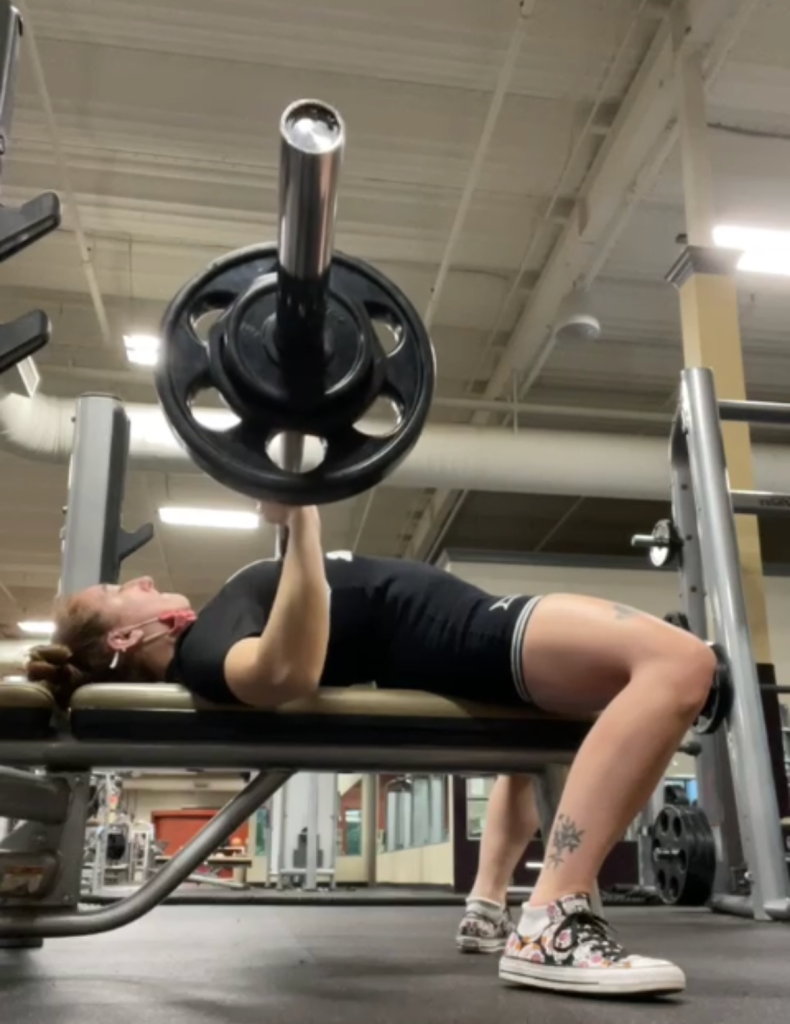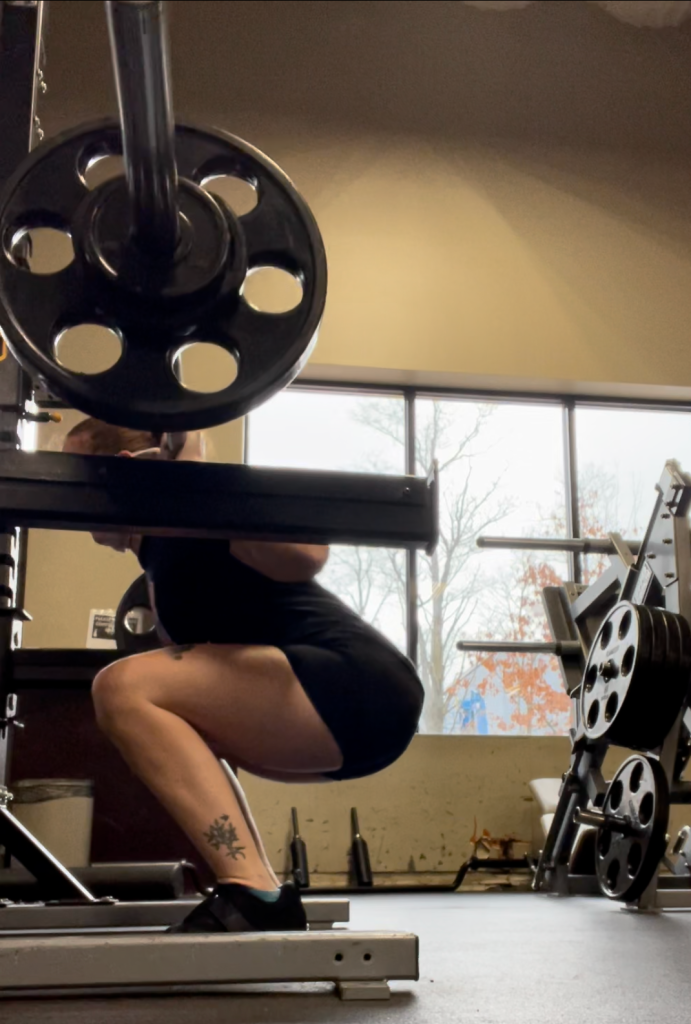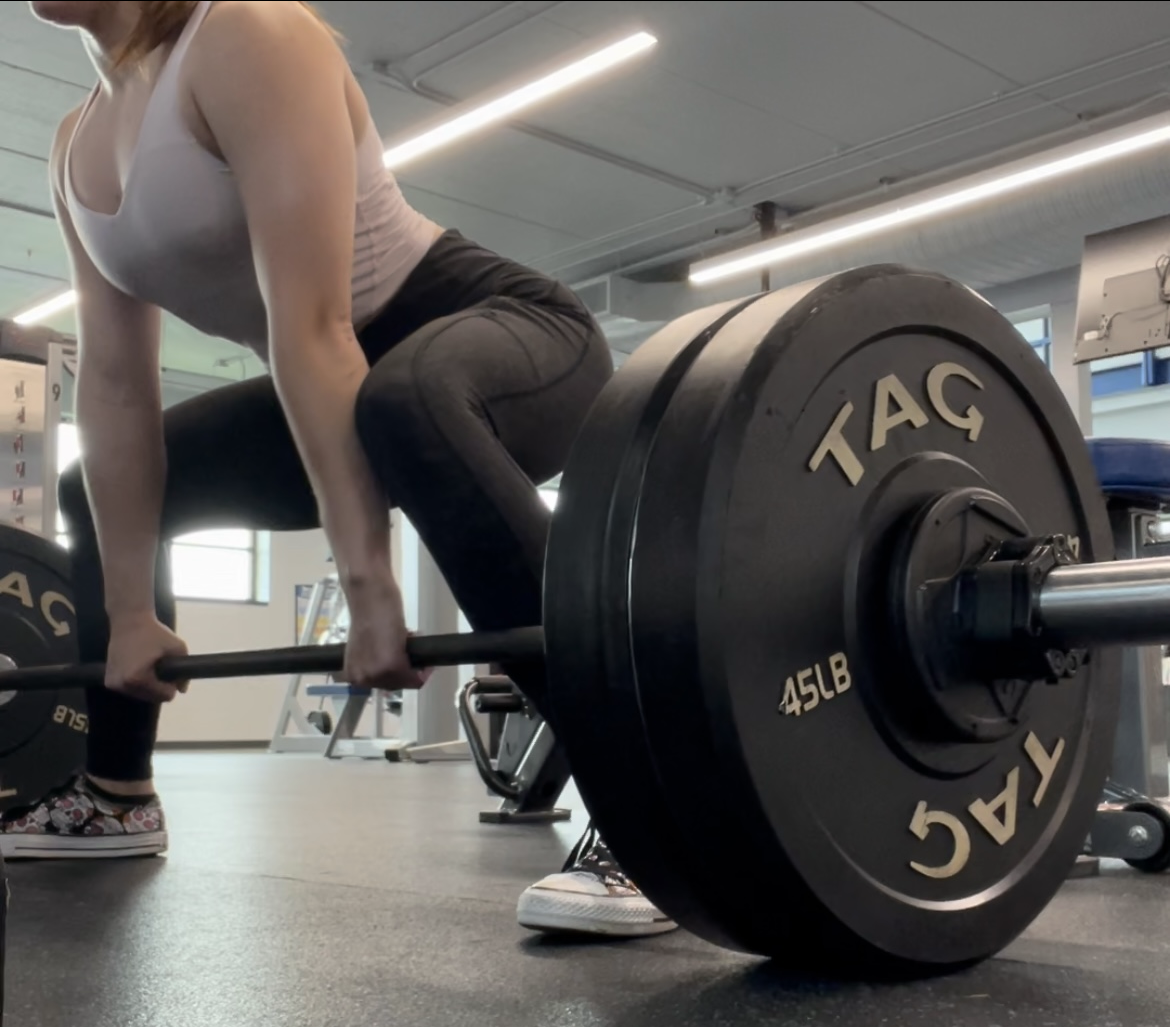Congrats! If you’re reading this, you’ve probably decided that you want to dip your toes into the world of powerlifting. While you might have seen videos of people wearing special suits, strange shoes, and white chalk, you don’t need all of the bells and whistles to start. I would encourage you to spend as little money as possible when you begin because all of the fun “extras” that every powerlifter uses can get expensive if you want gear that lasts. Make sure that you like the movements and the training style first before you seriously spend some money on the sport.
Here are the absolute basics of what you need to start.
Gym
Whether you have a home gym set up or have a commercial or private gym membership, you need a specific space to start training. However, not every gym is built the same. At the very least your home or outside gym of choice needs to have:
- A barbell and plates
- Squat Rack
- Bench Rack


This is the basic equipment you need to complete the “big three” lifts of squat, bench, and deadlift. In my opinion, if you cannot complete these lifts with a free barbell and a rack, you are not training for powerlifting. Because of this, I would avoid gyms like Planet Fitness, which only supply Smith machines and preloaded barbells.
Any home gyms with a free barbell or plate or another commercial gym are both great and cost-effective places to begin. If you’d like to go a step further, you can join a powerlifting-specific gym. Here is a list of USA Powerlifting friendly or affiliated gyms if you want to jump right into the action.
Maxes
Once you’ve found your home base, you’ll need some personal stats to get started training. It’s difficult to create goals and use the correct weight while training if you don’t know what you’re starting with. To do this, you need to find your Max (the most amount of weight you can lift with one rep) for squat, bench, and deadlift.
While form is extremely important to reduce injury, don’t worry if it’s not completely perfect right now when you’re getting a ballpark range of where you are with strength. Instead, take a day and go with a friend to spot you while squatting, benching, and deadlifting and try your best, but don’t be discouraged if your numbers seem low. Everyone starts somewhere.
Here are some pointers for each lift so you are testing your maxes to the technical requirements of the sport.
- Squat
- Squat low enough that your hip crease goes below your knee crease aka “breaking parallel” or “hitting depth.”
- Bench
- While keeping your head, shoulders, butt, and feet touching the bench and the ground, bring the bar down to touch your chest before pushing it back up to the starting position.
- Deadlift
- Create full-body tension by squeezing the bar and engaging your feet, quads, and lats, pull the slack out of the bar, and pull straight up without hitching the bar or resting it on your thighs.
There are a lot more smaller technical aspects to each lift, but you can find and critique these better after you have a baseline max to go off of for the rest of your training.
I’d recommend videotaping all of your attempts to help you see where you are lacking. It’s also fun to look back on after you’ve been training for a while!
Program
After you find your maxes, you need to find a program to follow. Without a program, it is difficult to track your progress. You have two (free) options to find a program.
Create Your Own
When you create your own program, you should take into account how many days you can train and research the accessory movements that would best help support the big three lifts. Creating your own program can get confusing fast, solely because there is so much information out there on programming. That’s why I’d recommend the second option for complete powerlifting beginners.
Use a Free Program
There are so many amazing coaches and athletes out there who have created free programs for anyone to use. While these are not personalized programs, they are a great way to get started. Check out the fitness or powerlifting Reddit or find a coach that offers a free program. Two of my favorites that I ran when I was a complete beginner were GZCLP and Joe Stanek’s Gameday Barbell Linear Program.
No matter which program you pick, they all are spreadsheets where you input your maxes and the spreadsheet will automatically input the weight and reps you should use for each workout. Each program should come with a set of directions as well to explain its nuances. At the end of the program, it will ask you to test your maxes again before you deload or run the program again.
The structure that a program provides is necessary to make progress and create the habit of training.
Nice to Haves
The following equipment is in no way a requirement to start powerlifting. However, if you already have them or if your gym offers them, feel free to take advantage of them.
- Flat soled shoes (Converse, Vans, Nike Blazers, etc.)
- Nutrition program
- Competition gear (belt, knee sleeves, wrist wraps)
- Chalk
- Lifting straps
- A coach
In a later post, I will break down all the “extra” equipment you might consider if you decided to be serious about powerlifting.
For now, all you need is a gym with the right equipment, your starting maxes for the three lifts, and a program to give your workouts a little structure.
If you have any questions about picking programs or lift techniques, feel free to leave a comment so we can all learn from each other. Stay tuned for articles breaking down the big three technique and gear recommendations.
